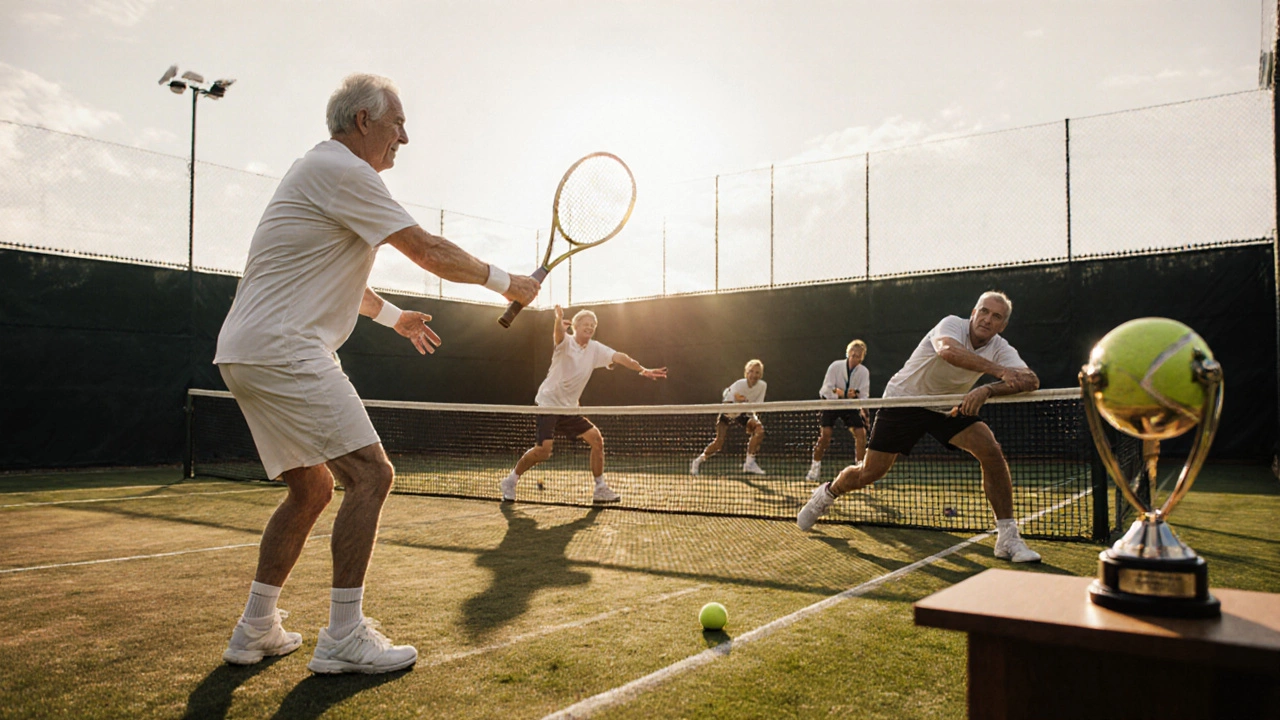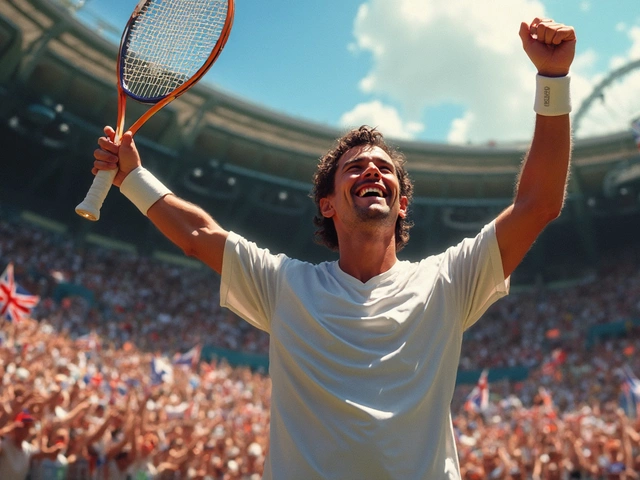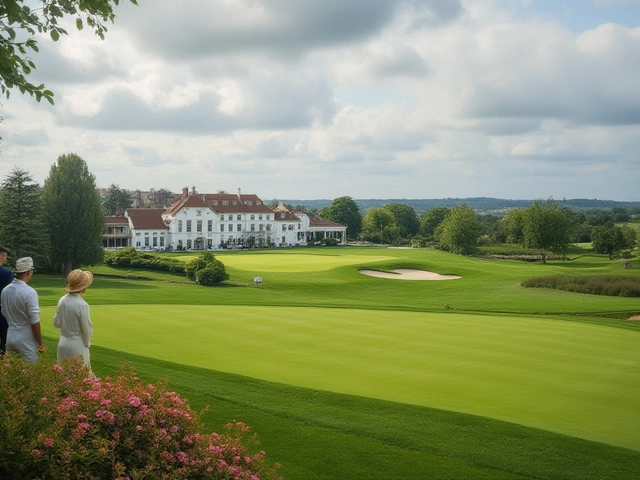
Tennis Tournaments November 23, 2025
Is 40 Too Old to Play Tennis? Real Answers from Courts Across Britain
You’re 40. Your knees creak a little more than they used to. Your back stiffens after sitting too long. And then you see it-a local doubles tournament flyer. The prize is a case of cider and a trophy shaped like a tennis ball. You haven’t swung a racket in five years. But you still remember the feel of a clean forehand. So you ask: Is 40 too old to play tennis? The answer isn’t yes or no. It’s more like: Here’s what actually happens when people your age step onto the court.
Age doesn’t break tennis-lack of movement does
Tennis isn’t a sport for the young. It’s a sport for the mobile. At 40, you’re not fighting against biology. You’re fighting against years of sitting at desks, scrolling on phones, and skipping warm-ups. The real issue isn’t your age. It’s whether you’ve let your body get out of practice.
Look at the data. In the UK, players aged 40-59 made up 28% of all registered tennis club members in 2024, according to LTA statistics. That’s more than teenagers. And it’s not just club players. In the 2025 British Over-40s National Championships, the average age of finalists was 47. The winner? A 52-year-old former schoolteacher who played three times a week and did 15 minutes of mobility drills every morning.
What separates these players from those who quit? It’s not talent. It’s consistency. People who stay in the game after 40 don’t train like pros. They train like people who know their bodies. They show up. They stretch. They play smart.
What changes when you turn 40?
Your body doesn’t suddenly stop working. But it does start asking for a little more respect.
- Recovery takes longer. A 25-year-old might play two matches in a day and feel fine the next morning. At 40, you need 48 hours between intense sessions. That’s not weakness-it’s wisdom.
- Joints get picky. Knees, shoulders, and lower backs become more sensitive. That doesn’t mean you can’t play. It means you need to warm up properly. Five minutes of dynamic stretches (leg swings, arm circles, hip openers) cuts injury risk by 40%, according to a 2023 study in the British Journal of Sports Medicine.
- Reaction time slows slightly. Yes, you won’t chase down every drop shot like you did at 25. But tennis isn’t just speed. It’s placement, spin, and timing. At 40, you compensate with experience. You read the game better. You make your opponent move more. That’s an advantage most 20-year-olds haven’t learned yet.
One man I spoke to in Bristol-Mark, 43-used to play singles every weekend. After a bad ankle twist at 38, he switched to doubles and added yoga twice a week. Now he’s in the top 10 of his regional league. He says: “I’m slower, but I’m smarter. And I don’t get hurt anymore.”
Can you still compete in tournaments after 40?
Yes. And not just in “senior” divisions. Many local tournaments have open categories where age doesn’t matter. But there are also dedicated events built for players your age.
In England, the Lawn Tennis Association runs the Over-40s County Championships. There are also national events like the British Over-45s and Over-50s Championships. These aren’t charity events. They’re serious competitions. Players train. They have coaches. Some even hire physios.
And here’s the surprise: many of these tournaments have more participants than the U18 divisions. In 2024, the Over-40s Nationals had 187 entries. The U18s had 152.
If you’re thinking of entering your first tournament, start small. Look for local “social doubles” events. They’re low-pressure, no rankings, just fun. Play with someone who’s been around a while. Ask them how they warm up. Watch how they move. Learn from the people who’ve figured it out.

What gear do you actually need?
You don’t need the latest $300 racket. But you do need the right one.
- Racket weight: Go lighter. 270-290 grams. Heavier rackets put more stress on your elbow and shoulder. A lighter one gives you control without strain.
- Grip size: Too small? You’ll grip too tight. Too big? You lose feel. Hold the racket like you’re shaking hands. Your index finger should just touch your palm. If it doesn’t, adjust.
- Balls: Use “pressureless” or “extra duty” balls. They’re heavier and slower, which reduces the shock on your joints.
- Shoes: Don’t wear running shoes. Tennis shoes have lateral support. Running shoes roll sideways. That’s how you twist your ankle.
One player I met at a Bristol club, Helen, 46, switched from a heavy Wilson Blade to a lighter Babolat Pure Drive Lite. She said: “I used to have tennis elbow every spring. Now I play all year. The racket made all the difference.”
How to get back in shape without burning out
You don’t need to run marathons. You don’t need to lift heavy weights. You need three things: mobility, strength, and consistency.
- Move every day. Walk 30 minutes. Do 10 minutes of bodyweight squats and lunges. Stretch your hips and shoulders. This isn’t training. It’s maintenance.
- Build core strength. Your core is your engine. Planks, dead bugs, bird-dogs-do 10 minutes, three times a week. It helps you rotate without straining your back.
- Play regularly. Two sessions a week is enough. One hour of doubles, one hour of drills. That’s it. No need to grind. Just show up.
People think they need to be fit to play tennis. The truth? Tennis makes you fit. You don’t need to be in perfect shape to start. You just need to start.

What’s holding you back?
Most people who say “I’m too old” are really saying: “I’m scared.”
You’re scared you’ll look silly. You’re scared you’ll lose. You’re scared you’ll hurt yourself.
Here’s the truth: everyone at the court is focused on their own game. No one’s watching you. And if someone is? They’re probably 70 and still playing better than you ever did.
One woman I met at a club in Bath-Carol, 51-started playing again after her divorce. She said: “I thought I was too old to be good. Turns out, I was just too scared to try. Now I’ve made friends. I sleep better. I feel alive.”
Tennis doesn’t care how old you are. It only cares if you’re willing to show up.
Real stories from the court
John, 48, from Cardiff: He had a herniated disc at 42. Doctors told him to stop. He started with walking on the court, then light volleys, then doubles. Three years later, he won his regional Over-45s singles title.
Debra, 44, from Leeds: She picked up a racket after her kids went to college. She’d never played before. Now she’s coaching kids on weekends and plays in a league. “I thought tennis was for people who had time. Turns out, it’s for people who want to feel young again.”
These aren’t exceptions. They’re the norm.
Final thought: You’re not too old. You’re just out of practice.
At 40, you’re not past your prime. You’re past your excuses.
Tennis doesn’t reward speed alone. It rewards patience. Strategy. Adaptability. Those aren’t qualities you lose with age. They’re the ones you gain.
If you’ve been thinking about picking up a racket again, don’t wait for “someday.” Don’t wait until you’re “ready.”
Go to your local club. Ask if they have an Over-40s social night. Show up in your old sneakers. Swing awkwardly. Miss the ball. Laugh. Do it again tomorrow.
The court isn’t waiting for the young. It’s waiting for you.
Is 40 too old to start playing tennis?
No. Many people start tennis in their 40s and love it. Clubs often have beginner doubles nights designed for adults with little or no experience. You don’t need to be fit to start-you get fit by playing. Start slow, focus on technique, and enjoy the social side.
Can I compete in tournaments after 40?
Yes. There are hundreds of local, regional, and national tournaments for players over 40, 45, and 50. These aren’t just social events-they’re competitive. The Lawn Tennis Association runs official Over-40s events across England. Many players in these tournaments train seriously and have coached experience.
Do I need special equipment if I’m over 40?
You don’t need expensive gear, but you should choose wisely. Use a lighter racket (270-290g), avoid running shoes (get proper tennis shoes), and use extra-duty or pressureless balls to reduce joint stress. Grip size matters too-your index finger should barely touch your palm when holding the racket.
How often should I play to stay healthy?
Two sessions a week is ideal-one doubles match and one light drill session. Give yourself 48 hours between intense play to recover. Daily mobility work-like hip stretches and shoulder rolls-makes a bigger difference than long workouts. Consistency beats intensity after 40.
Will playing tennis hurt my joints?
It can, if you skip warm-ups or use wrong gear. But properly played, tennis strengthens joints. Studies show that regular tennis players over 40 have better joint mobility than non-players. The key is warming up for 10 minutes before play, cooling down after, and choosing the right racket and shoes. Most injuries come from rushing back too soon-not from playing itself.




